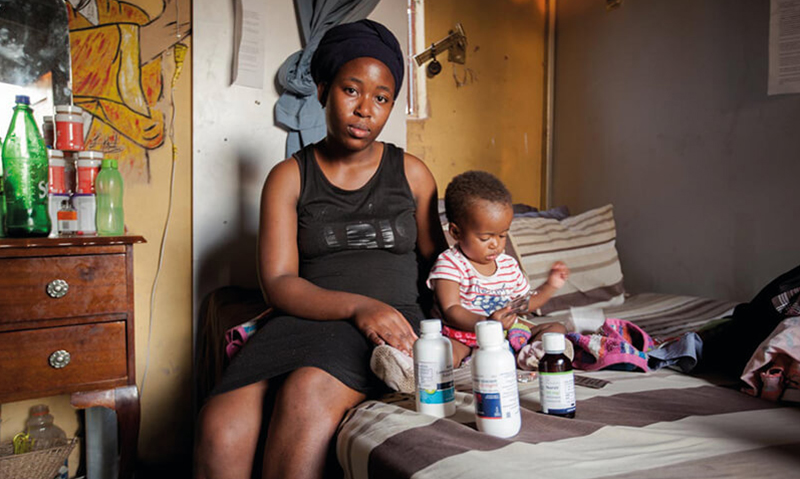
PAEDIATRIC HIV

"I faced a lot of difficulties with the medicine. I really had to battle in order for my baby to take them. It’s heart-breaking to give a child four medicines at a time."
Sani
Sani, with her one-year old daughter Mel who is co- infected with HIV and TB, South Africa
Sani and her husband Brian knew they were going to have a child that was going to be HIV- positive. In addition to living with HIV, their baby Mel had also contracted tuberculosis (TB) and required multiple medicines.
While Sani and her husband Brian were able to obtain treatment for Mel, the available HIV therapy for infants was a foul-tasting lopinavir/ritonavir solution containing 40% alcohol and requiring refrigeration.
One of their biggest challenges was administering the medicine every day.
Despite major efforts to increase the number of children on HIV treatment and a continuing reduction in mother- to-child transmission of HIV, many of the two million children living with HIV are still being left behind. In 2016, only 43% of children living with HIV received antiretroviral therapy. While this is an important increase from 15% in 2009, it remains an unacceptably low level of treatment access for a vulnerable population.
One major challenge that contributes to this treatment gap is the suboptimal paediatric formulations available today. These formulations have not been designed with children’s needs in mind: the only available version of lopinavir/ritonavir (LPV/r) is a bitter-tasting syrup that requires refrigeration and contains 40% alcohol.
Children struggle to take the medicine, often spitting or vomiting it back up, while caretakers in many sub-Saharan countries are forced to store the treatments buried in sand to keep them cool.
An improved first-line therapy for children under three years of age would be safe, easy to administer, well-tolerated and palatable, heat-stable, readily dispersible, and dosed once daily or less.
It is also important for any paediatric HIV treatment to be compatible with TB treatment, because children living with HIV are often co-infected with TB. In 2016, based on the interim results of a DND
- 90% of infected infants acquire HIV from their mothers, during pregnancy, delivery, or through breast-feeding
- Effective treatments can prevent HIV transmission from a mother to her child, but not all HIV-infected pregnant women have access to these treatments
- Without treatment, 1 in 3 children die in their first year of life; and half before they reach their second birthday
- Only 43% of children (< 15 years) living with HIV are on antiretroviral medication
- Opportunistic infections such as tuberculosis are common
2.1MILLION
children living with HIV in 2016
90%
in sub-Saharan Africa
OVER300
HIV-related child deaths every day
160,000
children newly infected with HIV in 2016

Children (<15 years) estimated to be living with HIV in 2015 (Source: UNAIDS)
